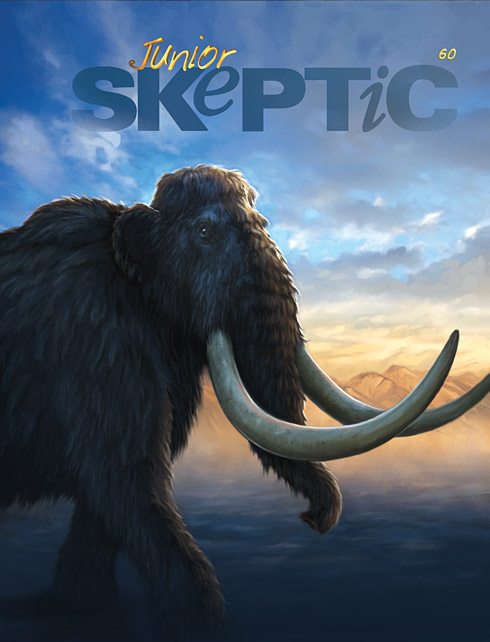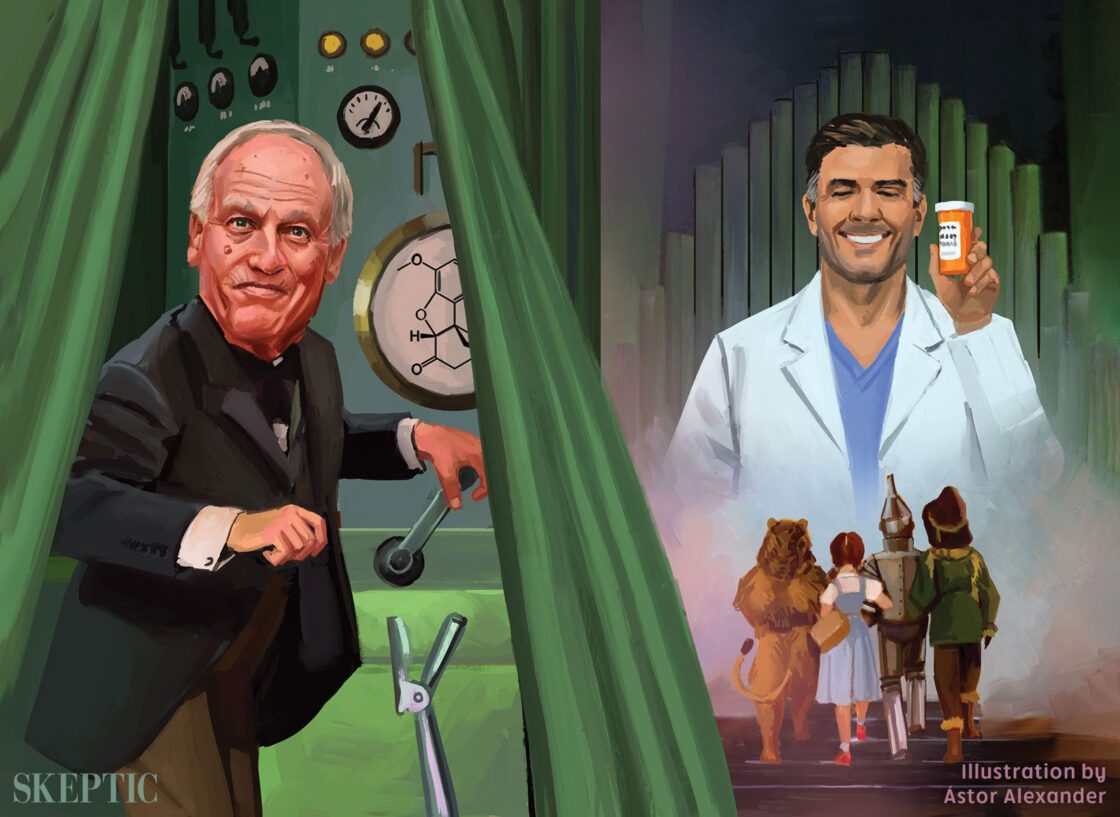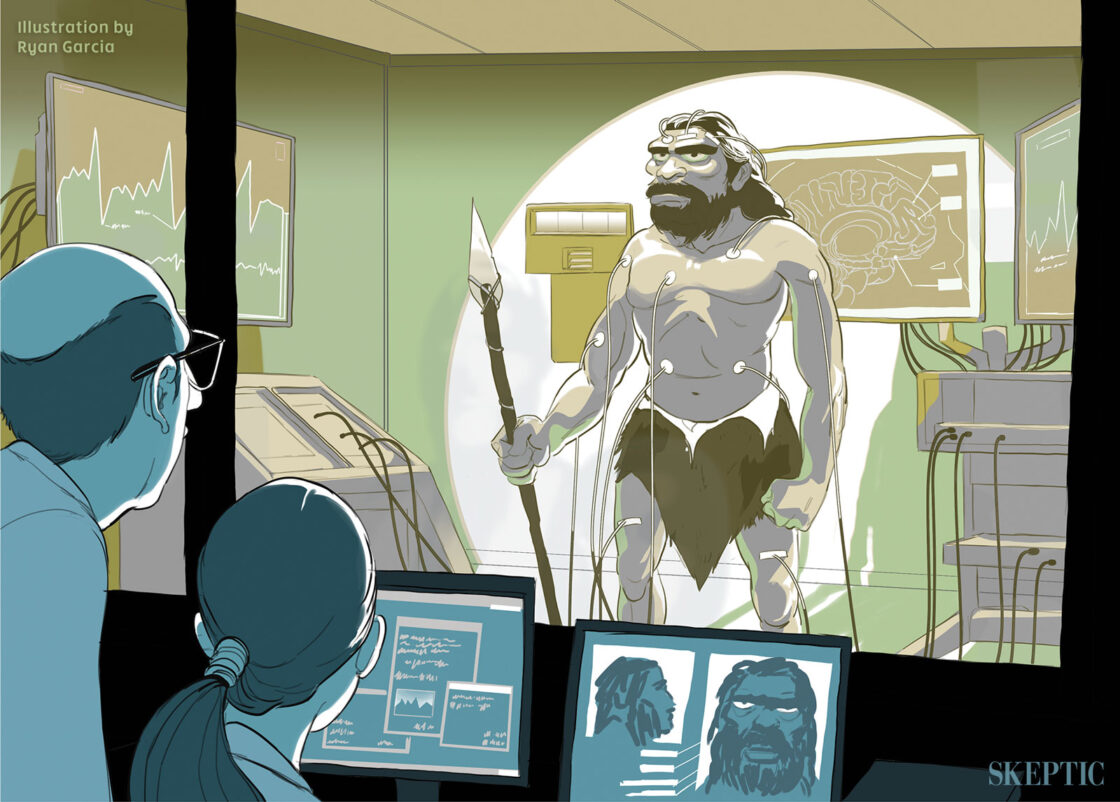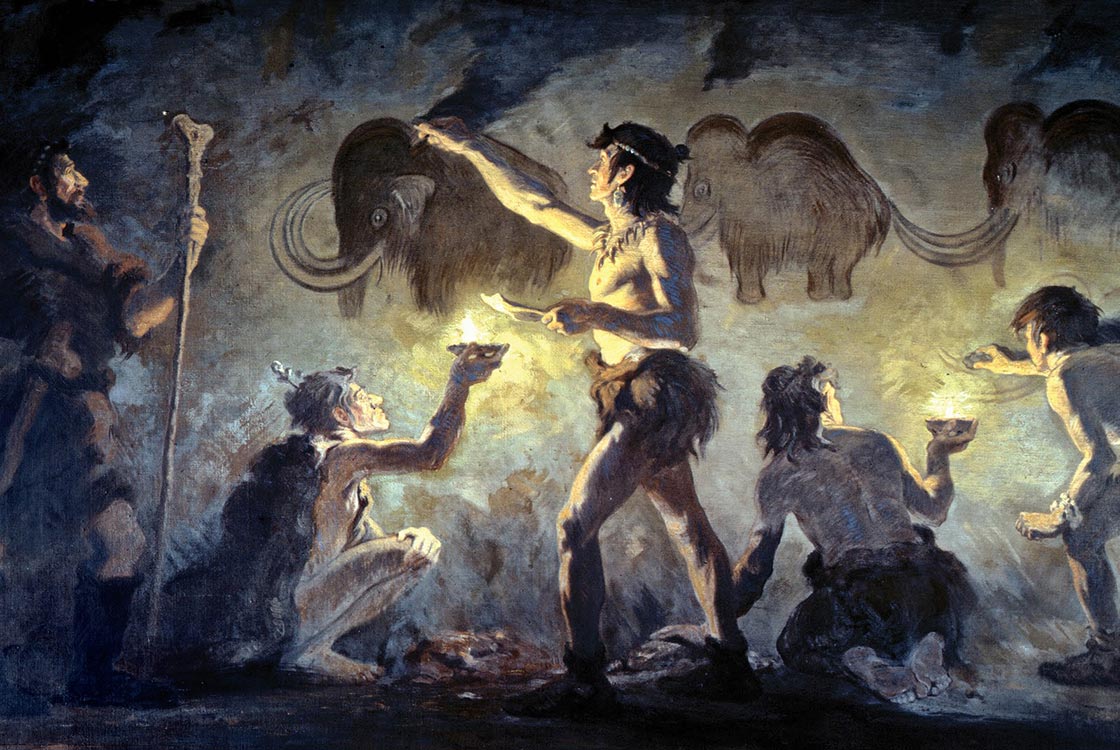In the pages of Junior Skeptic—the engagingly illustrated science and critical thinking publication for younger readers, bound within every issue of Skeptic magazine—we often look at “wild and wooly” mysteries. In Junior Skeptic #60 (2016), we mean that literally; we explore the hidden history of mammoths and mastodons! Enjoy this excerpt from the first couple pages of the Junior Skeptic #60, bound within Skeptic magazine 21.3 (2016), available now in print and digital editions.
The elephant family tree has had many oddly shaped branches. There once existed elephants with four tusks or even tusks shaped like shovels. But fossils of mammoths and mastodons weren’t just surprising—they changed science forever! Indeed, the discovery of these great shaggy prehistoric beasts overturned our understanding of the entire world. How did that happen?
First, before we consider the mammoths, I’d like you to pause for a moment and imagine some of the animals that lived even earlier, during the age of the dinosaurs. Picture these animals living and breathing in their natural environments. What do you see? Perhaps the terrible teeth of Tyrannosaurus rex slavering toward prey, or rows of plates proudly displayed over the arching back of Stegosaurus. You may imagine batwinged pterosaurs soaring overhead, titanic long-necked sauropod dinosaurs, graceful plesiosaurs darting after fish in the seas.

Get this issue of Junior Skeptic bound within issue 21.3 of Skeptic. This issue’s cover features a digital painting by Daniel Loxton.
If I asked you where these animals are today, you would tell me that they’re all gone from the world. Extinct. And how do we know about these vanished creatures? You can answer that question, too: from fossils—the petrified traces these animals left behind. Bones. Teeth. Muddy footprints hardened into stone.
You probably can’t remember when you learned these things. It feels like you’ve always known! Many kids learn about prehistoric creatures when they are toddlers, long before they can read.
But that wasn’t always the case. There was a time when no child, no scientist, no human being knew any of that. Dinosaurs, fossils, extinction—no one knew, and no one ever had known.
The mighty dinosaurs died out over sixty million years before our own species evolved. Our civilization grew up without any knowledge of their existence. Few people guessed that our planet was billions of years older than humanity, nor suspected that rocks and fossils could reveal that unknown history to us.
Forgotten Giants
Humanity never knew the dinosaurs. But Ice Age mammals were different. For tens of thousands of years, human beings lived alongside mammoths, mastodons, wooly rhinoceroses, and other creatures that have since gone extinct. Those prehistoric people used stone tools, but they were just as clever as you are. They made art. They told stories around the fire. And for millennia, they watched herds of mammoths roam across the landscape, as much an ordinary part of nature as deer might seem to you. People hunted mammoths, painted pictures of mammoths, made sculptures from their ivory tusks. Some cultures even made their homes from the bones of these mighty animals.
But then the world changed. First in one place and then another, numerous species of large mammals died out, including the mammoths and mastodons. The giants fell—and humanity forgot that they had ever existed.
The Bones of Giants
Yet extinction could not erase mammoths from the world. Not completely. Several species of mammoths and mastodons once thrived across North America, Central America, Europe, and Asia. During their time, millions of individuals from these and other prehistoric elephant species were born, lived, and died. Like the dinosaurs, they left traces of themselves behind: fossilized bones and teeth.
Thousands of years went by. Humans flourished in a world full of fossils they did not understand. As early civilizations grew, people found stones that looked like animals or parts of animals—sometimes like animals no one had ever seen. What could these strange stones mean? Ancient Greeks marveled at seashells on mountaintops. Native Americans puzzled over gigantic bird-like dinosaur tracks. Desert nomads struggled to explain strange bones discovered among the sand dunes. (For more on ancient ideas about fossils, see Junior Skeptic #38 and #41.)
In Europe, bones from mammoths and other extinct creatures have been turning up for thousands of years. They erode out of cliffsides and river banks. They’re found buried at quarries, farms, and construction sites. In ancient times, the explanation for enormous mystery bones often seemed obvious to the people who found them: they were the skeletons of giant humans!
“Whenever the streams rise with rainstorms,” explained one Roman writer, rushing floodwater sometimes unearthed “bones like men’s carcasses but far bigger. Due to the immeasurable hugeness of the bones they are reported to have been the monstrous bodies of the army of giants.”
This was an easy mistake for ancient people to make. All land mammals are descended from a common ancestor, so our skeletons are surprisingly similar. Mammoths had jaw bones, and leg bones, and ribs just as we do. Most of their bones resemble larger, stronger versions of our own. Tales of ogres or giants are common in many cultures, so this seemed like the simplest explanation for huge, human-looking bones. […]
Continue reading the rest of this issue of Junior Skeptic #60, bound within Skeptic magazine 21.3 (2016), available now in print and digital editions.
About the Editor of Junior Skeptic

Daniel Loxton is the Editor of INSIGHT at Skeptic.com and of Junior Skeptic, the 10-page kids’ science section bound within Skeptic magazine. Daniel has been an avid follower of the paranormal literature since childhood, and of the skeptical literature since his youth. He is also an award-winning author. Read Daniel’s full bio or his Insight posts.
This article was published on September 28, 2016.


















Fascinating. To compound the confusion, at least a few times proto-Greeks reburied skeletons of mammoths in human-like patterns. These burials may have given rise to stories about Cyclops and other legendary giants. At least a few anthropologists have posited that the mammoth’s nose-holes led to the belief in the one great eye. Some early art shows cyclops (it means round- or wheel-eye, not one eye) with two normal eyes and one great eye between them and slightly lower, above the nose.
If you were at 150 meters was it in a cave or underwater or part of a scientific dig??
What is the geologic profile at this location ?>
I will try to look it up
Bob Pease
To Daniel Loxton:
I fund a molar of probably a Zigolopphodon, at a depth of 150 m. in the coast of north Barcelona
I am not a paleonologist and I should like to sennnd you a picture of it, for having your opinion.
Can you give me your mail for sending it?